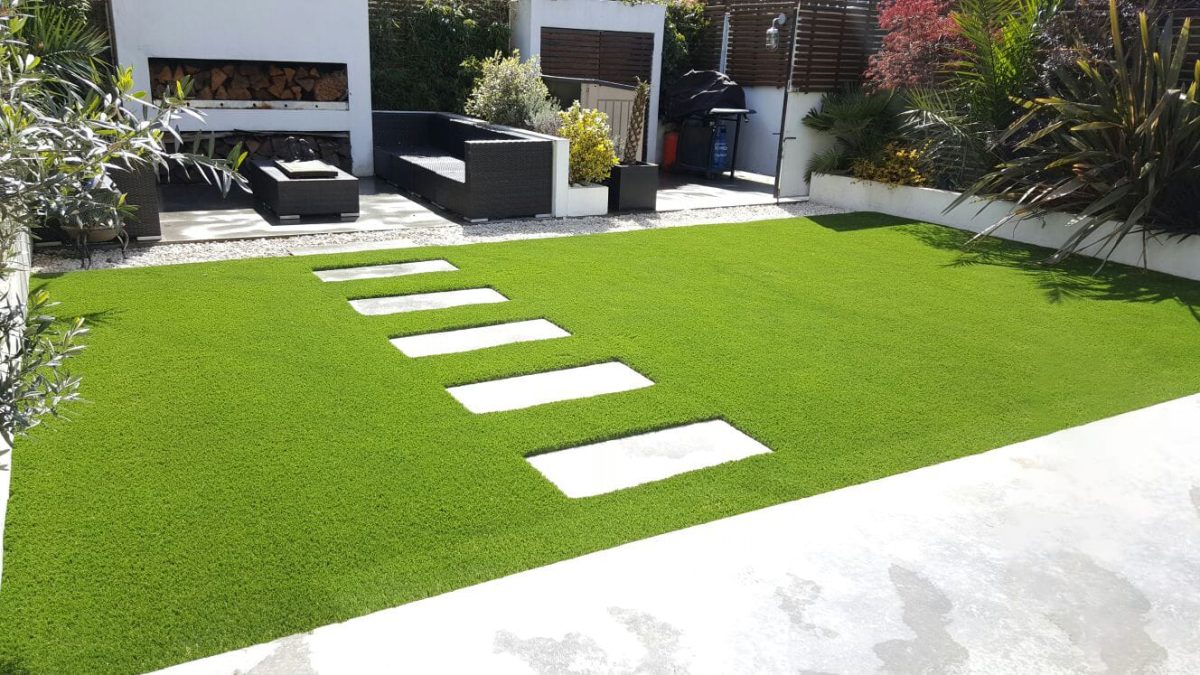With Arizona’s unique climate and the ongoing challenges of water conservation, the demand for sustainable landscaping solutions is on the rise. One niche that has seen remarkable growth in popularity is artificial grass. In the cactus-studded southwest, the lush green lawns once only seen in magazines and movies are no longer just a mirage. They are a reality — an artificial one, to be precise — and a growing trend that extends from stylish urban domiciles to sprawling suburbia.
Arizona’s Relationship with Traditional Lawns
Home to some of the hottest desert landscapes in North America, Arizona presents a conundrum for those who love the vibrancy of greenery but are mindful of the precious resource that is water. Traditional lawns, a ubiquitous feature of homes across the country, have long been a staple of American suburban life, but in a place where every drop counts, they have come under scrutiny. According to the Arizona Department of Water Resources, the average city dweller in Arizona uses approximately 120 gallons of water per day, with outdoor use accounting for approximately 50% of that. Arizona’s traditional lawns typically demand vast quantities of water to stay green, leading to water waste, even amid stringent conservation guidelines.
The Artificial Alternative
Enter artificial grass, a compelling alternative that’s transforming many an arid landscape into a green oasis. Modern synthetic turf is far from the stiff, neon-bright carpet of the 1960s and 70s. Today, it’s softer, more realistic, and designed to outlast even the greenest of natural lawns. Homeowners are trading in their lawnmowers for minimal-maintenance yards, and the residents of Arizona’s urban sprawl are beginning to take notice.
The Aesthetics of Artificial Grass
One immediate attraction of artificial grass is its year-round aesthetic appeal. Arizona residents don’t need to worry about their lawns succumbing to the summer’s blistering heat. Artificial grass stays luxuriously green, unscathed by the sun’s harsh rays, and resilient against heavy foot traffic. It requires no mowing, no fertilization, and no watering — making it an incredibly low-maintenance and eco-friendly landscaping option.
Economic Benefits and ROI
While the initial investment in artificial grass is higher than seeding a lawn with natural grass, the long-term financial benefits are compelling. Arizona’s water rates can be steep, and the ongoing costs associated with maintaining a natural lawn can add up quickly. Artificial grass, on the other hand, requires minimal water usage and next to no upkeep. The return on investment over the lifetime of the product can be substantial, especially for those planning to stay in their homes for an extended period.
Environmental Sustainability
Arguably the most critical benefit of artificial grass in Arizona is its positive impact on the environment. By eliminating water usage associated with lawn maintenance, homeowners are contributing to significant water savings. In a state where water conservation is a perpetual concern, the environmental appeal of artificial grass is clear. Additionally, artificial turf doesn’t require pesticides or fertilizers, further reducing harmful runoff into Arizona’s limited water supply.
Resilience to Pets and Play
One of the frequent points of contention among homeowners considering artificial grass is the issue of pet and child play areas. However, technological advancements have resulted in robust, safe, and pet-friendly versions of synthetic turf. These durable varieties can withstand the roughest playtime without losing their attractiveness. They’re also resistant to digging, ensuring that your pets can enjoy the yard without creating a maintenance headache.
Overcoming Skepticism
Despite the clear benefits offered by artificial grass, some homeowners in Arizona are hesitant to make the switch. There’s a perception, often rooted in an aesthetic prejudice, that synthetic lawns are less desirable than natural grass. This bias, however, is quickly fading as the quality and realism of artificial turf have made significant strides.
Addressing the Aesthetic Concern
The appearance of artificial grass has improved so much that it can be challenging to distinguish it from the real thing. High-quality synthetic turf comes in various shades of green, with different blade shapes and textures that mimic the nuances found in natural grass. Additionally, professional installation can ensure that the artificial lawn complements the property’s landscaping and architecture.
Breaking the Water Dependency
Education is a powerful tool in overcoming skepticism. Many Arizonans are unaware that their outdoor water usage, primarily for lawns, can be so high. By demonstrating the water-saving advantages of artificial grass and presenting data on water usage reduction, homeowners can see first-hand the benefits of converting to a synthetic lawn.
Longevity and Life Expectancy
Another common concern is the longevity of artificial grass. How long will it last under the Arizona sun? High-quality synthetic turf comes with warranties that cover fading, fraying, and other signs of wear. When properly installed and maintained, artificial grass can last upwards of 15-20 years, providing a reliably green and beautiful landscape for decades without the constant work needed for natural grass.
The Future of Lawns in Arizona
The trend towards artificial grass in Phoenix, Arizona is more than a nuanced shift in landscaping preferences. It’s a reimagining of what outdoor living can and should look like in a state known for its limited water resources. The future of lawns in Arizona is one of sustainability, technology, and a commitment to a greener, more eco-conscious lifestyle — albeit one that’s a little less natural and a lot more artificial.
In conclusion, artificial grass in Arizona is more than a novel landscaping choice. It’s a smart, sustainable solution to the unique challenges presented by the state’s environment. Homeowners who make the switch to synthetic turf are not only benefiting from a significant reduction in water usage but are contributing to the state’s ongoing water conservation efforts. With a realistic appearance that’s continually improving and a track record for durability, artificial grass may very well be the perfect solution for Arizona’s lawns.




